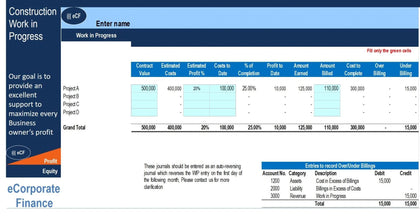LBO (Leveraged Buyout) Excel Model
INTRODUCTION:
This concise LBO model can be used to evaluate a multitude of different business opportunities across a wide range of industries. Its flexibility allows it to analyze potential investments of any size, and its functionality supports a variety of investment scenarios. Developed by a private equity professional with many years of experience, this financial model's sole purpose is to contribute to maximizing the effectiveness of your analysis.
FILLING OUT THE MODEL:
The five years of historical financials help provide context when forecasting for the next five years' operating financials. For example, although you can forecast future revenue growth as whatever percentage you want, the model's default setting is to use the average revenue growth of the past five years. This robust methodology helps support many of the assumptions in the model. Regarding debt assumptions, both the senior debt and refinanced debt are assumed to have mandatory principal repayments with individual amortization periods, but also optional principal payments that are financed by any surplus cash flow. The refinanced debt is optional depending on the specific investment scenario, but it allows you to re-lever the company while also paying off the senior debt, and then distribute any remaining proceeds to equity investors.
This concise LBO model can be used to evaluate a multitude of different business opportunities across a wide range of industries. Its flexibility allows it to analyze potential investments of any size, and its functionality supports a variety of investment scenarios. Developed by a private equity professional with many years of experience, this financial model's sole purpose is to contribute to maximizing the effectiveness of your analysis.
FILLING OUT THE MODEL:
The five years of historical financials help provide context when forecasting for the next five years' operating financials. For example, although you can forecast future revenue growth as whatever percentage you want, the model's default setting is to use the average revenue growth of the past five years. This robust methodology helps support many of the assumptions in the model. Regarding debt assumptions, both the senior debt and refinanced debt are assumed to have mandatory principal repayments with individual amortization periods, but also optional principal payments that are financed by any surplus cash flow. The refinanced debt is optional depending on the specific investment scenario, but it allows you to re-lever the company while also paying off the senior debt, and then distribute any remaining proceeds to equity investors.

































